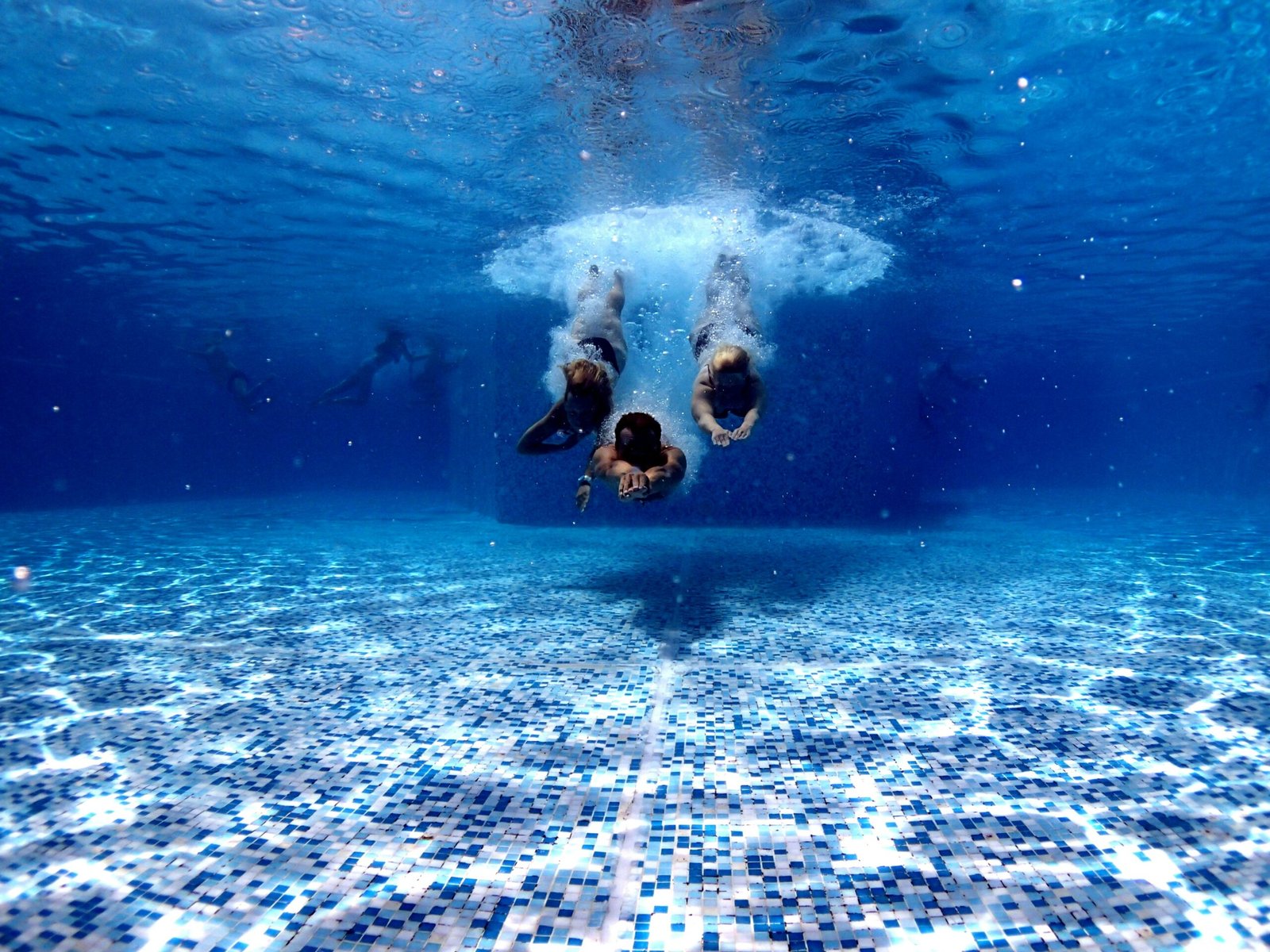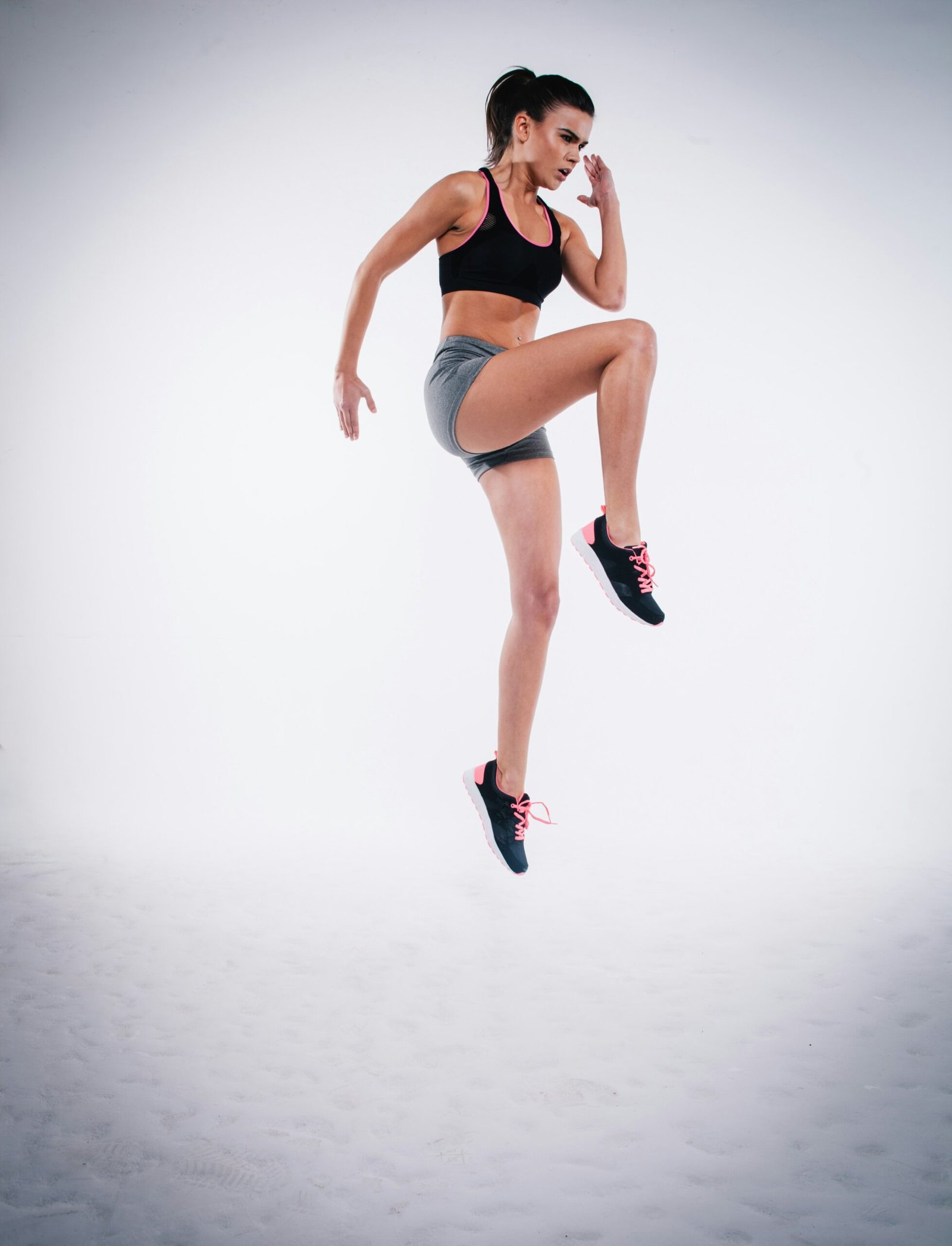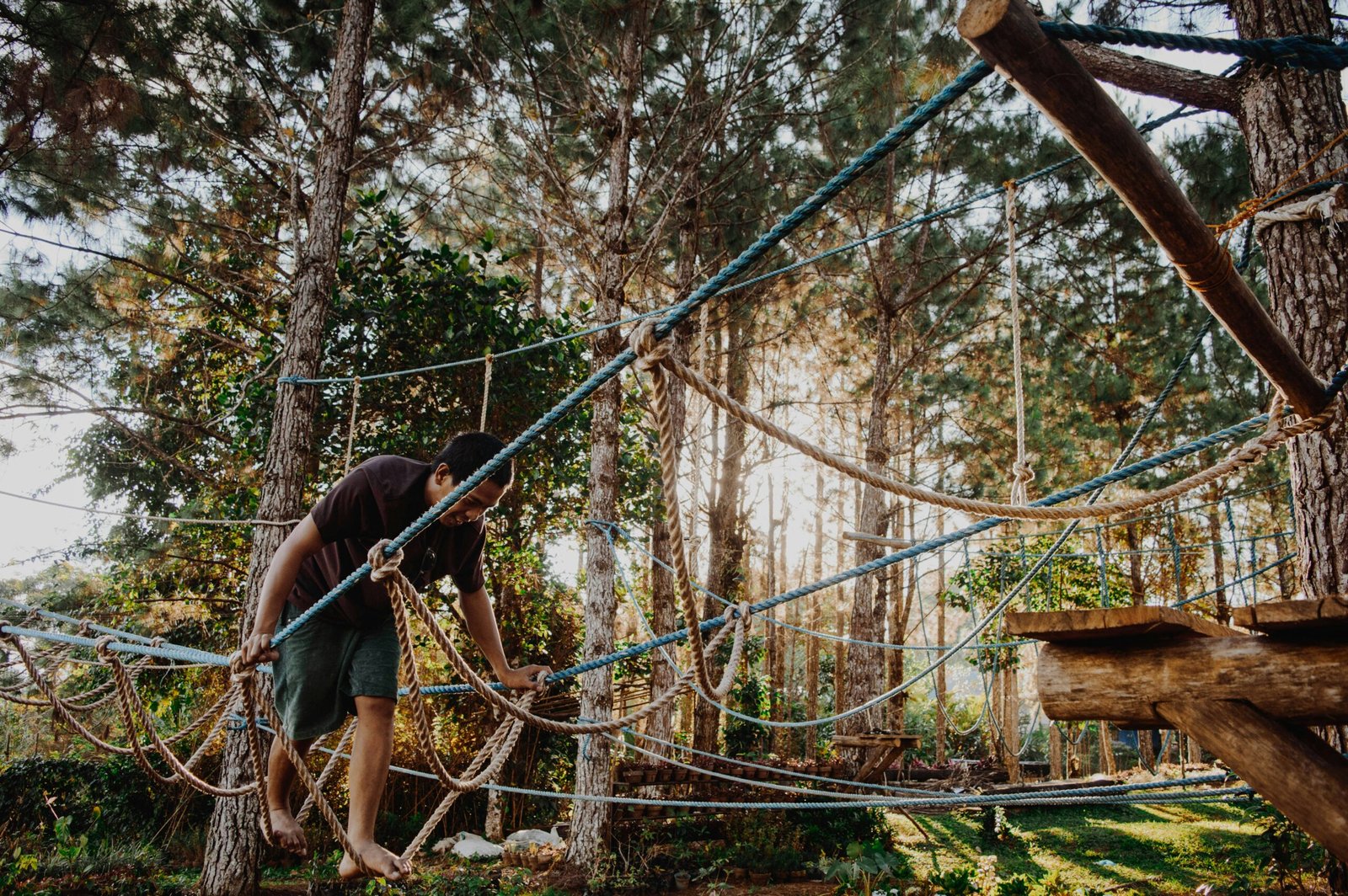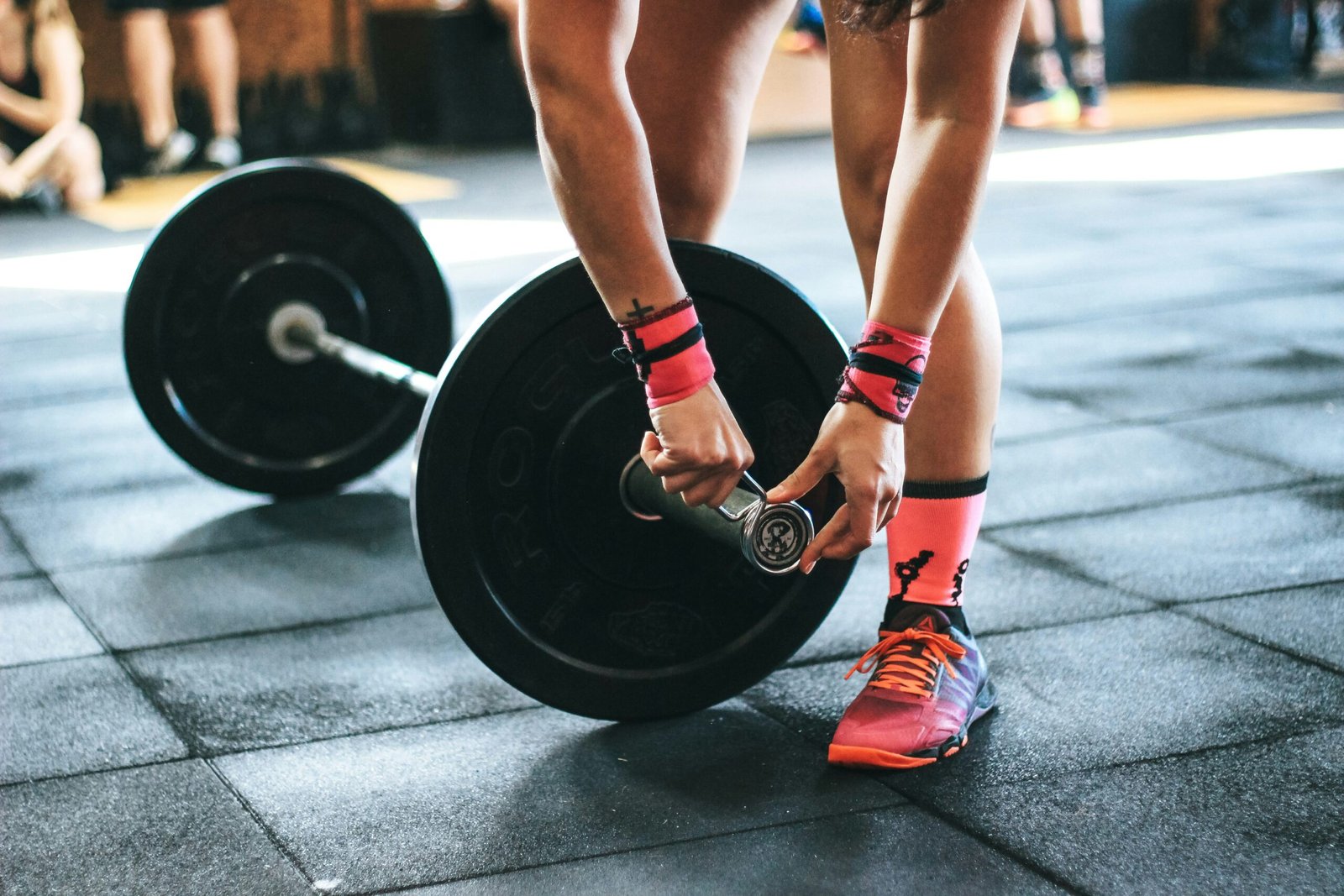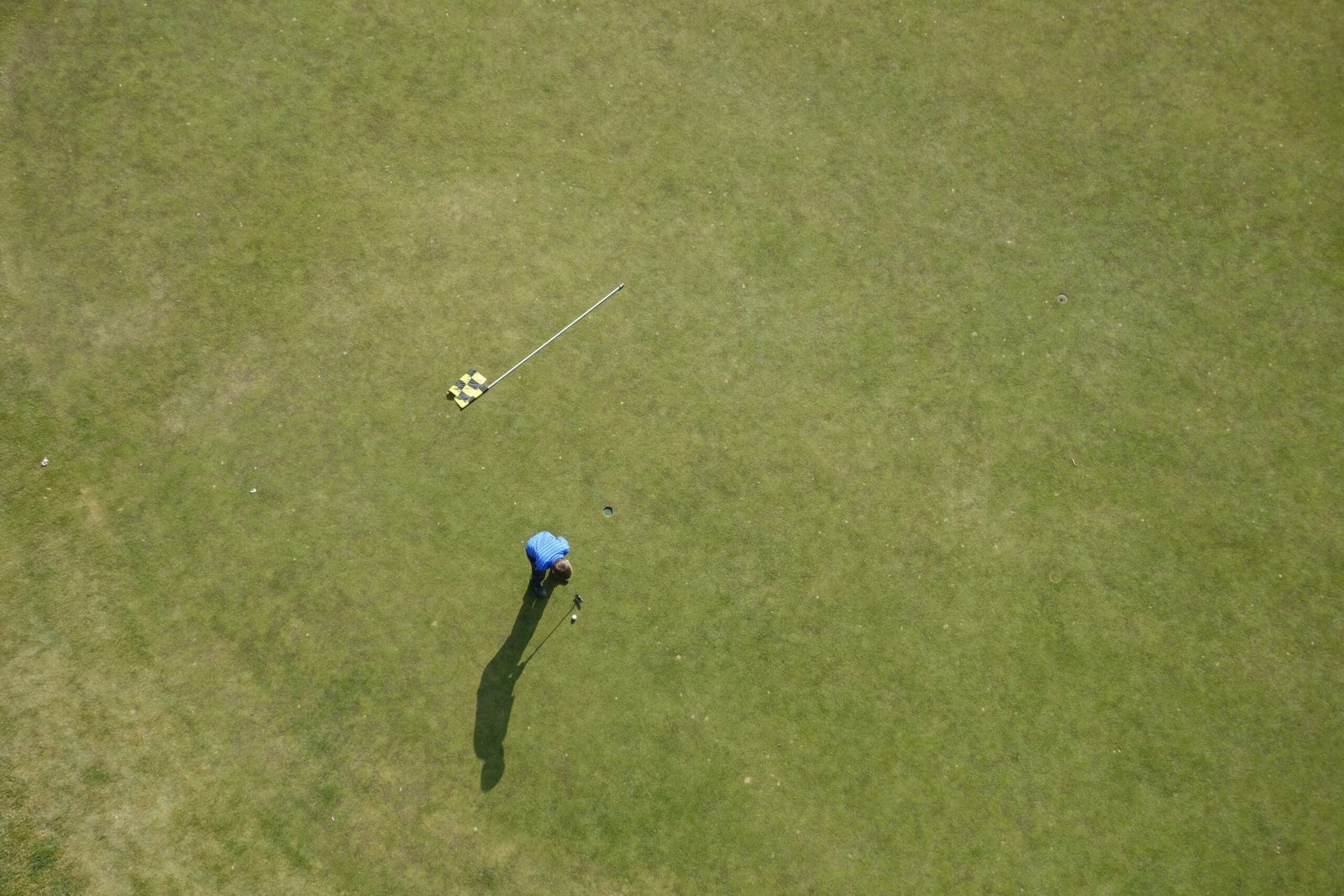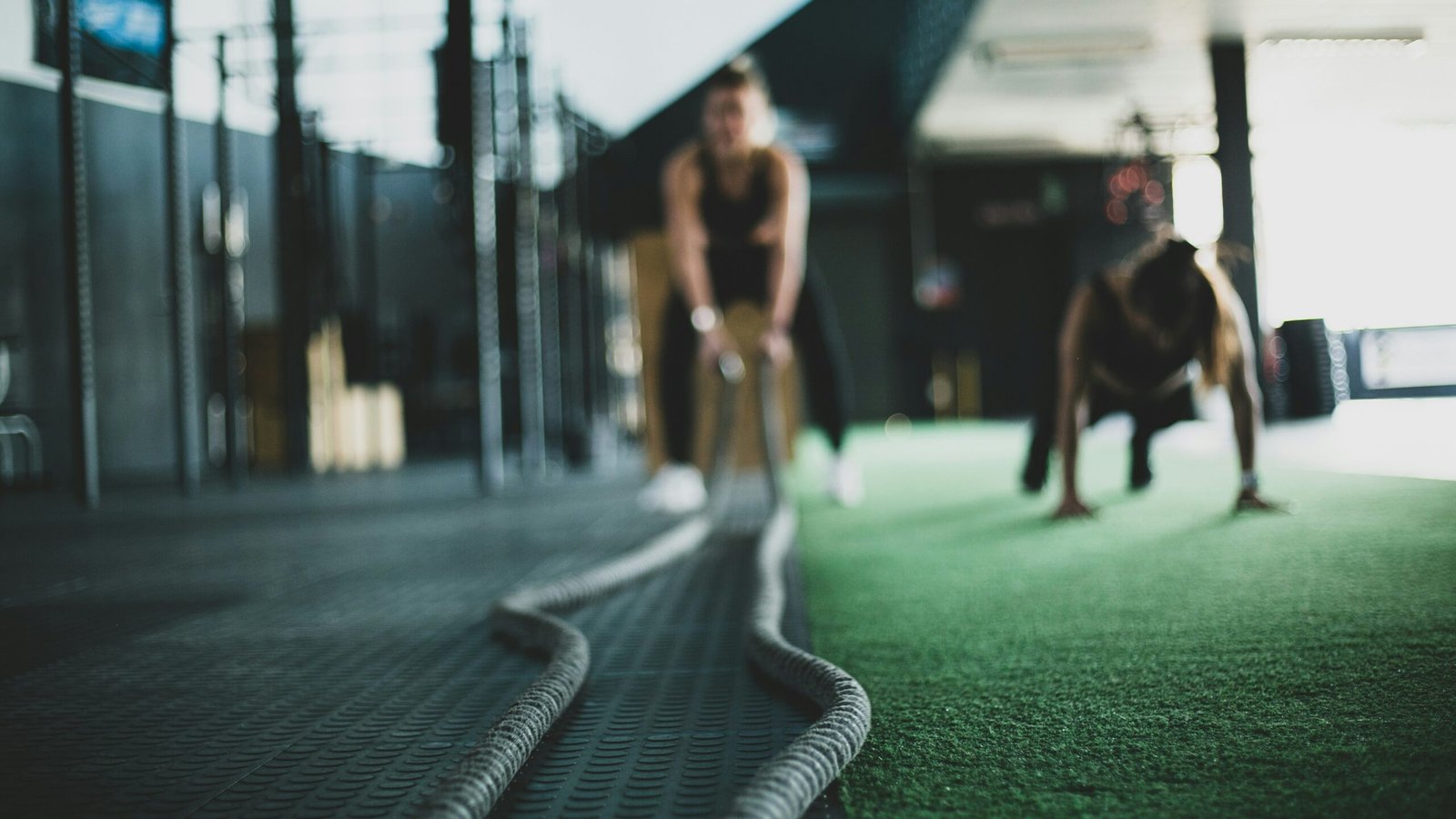Introduction to Parkour
Parkour is an innovative movement discipline that focuses on efficiently navigating obstacles in urban environments. Its origins can be traced back to the military training method known as “parcours,” which was developed in France during the 20th century. Branding itself as a form of functional movement, parkour emphasizes fluidity, creativity, and personal expression, enabling individuals to traverse their surroundings with confidence and style. As a mindset and methodology, parkour transcends mere physical activity, challenging practitioners to engage with their environment in a profound way.
At its core, parkour is built on four fundamental principles: efficiency, adaptability, creativity, and respect. Unlike traditional sports, which focus heavily on competition, parkour is more about self-improvement and community development. This ethos encourages individuals to focus on their personal journey and mastery of movement, fostering a supportive environment where practitioners can share techniques and skills. The adaptability of parkour allows it to be practiced in a variety of settings—from urban landscapes to natural terrains—making it accessible for almost anyone, regardless of fitness level.
While parkour is often confused with freerunning, the two disciplines are distinct. Freerunning places more emphasis on aesthetics, incorporating fluid movements like flips and spins, while parkour prioritizes efficiency and functionality. This differentiation illustrates the philosophical underpinnings of parkour as a discipline that values practicality in overcoming obstacles.
In summary, parkour represents a holistic approach to physical fitness and movement. It goes beyond mere athleticism, encompassing a lifestyle philosophy that encourages practitioners to explore their environment creatively and resourcefully. The growing popularity of parkour highlights its appeal as an engaging way to promote physical fitness, self-discipline, and community awareness.
Parkour as a Response to Urban Environments
Parkour, as an athletic discipline, has emerged as a creative response to the constraints and opportunities presented by urban environments. Originally developed in France during the late 20th century, this movement art encourages practitioners to view urban architecture not merely as a backdrop but as a dynamic environment ripe for physical expression. The practice of parkour involves traversing city landscapes by running, jumping, climbing, and vaulting over obstacles, essentially transforming the urban terrain into a playground for physical activity.
The relationship between parkour and urban architecture is fundamentally intertwined. Buildings, railings, walls, and other structures become integral components of parkour; they challenge practitioners to adapt their movements to varying surfaces, heights, and angles. This interaction not only tests physical abilities but also fosters creativity as individuals experiment with different techniques to navigate their surroundings. Through the lens of parkour, the concrete jungle transforms from an unyielding space into a rich canvas for exploration.
Insights from parkour practitioners reveal a profound connection to urban environments. Many athletes describe a sense of empowerment that arises from overcoming obstacles that once seemed insurmountable. This perspective encourages a positive relationship with the city, allowing enthusiasts to reclaim spaces that may otherwise feel intimidating or unwelcoming. Furthermore, the practice promotes an appreciation for the architectural details often overlooked in routine urban life, as practitioners engage with their surroundings in unexpected ways.
In essence, parkour exemplifies a unique blend of physicality and creativity, turning the challenges posed by urban landscapes into opportunities for growth and expression. This transformative approach highlights the potential of city spaces to foster community and inspire individuals to break free from traditional forms of exercise, redefining fitness within the context of urban living.
Physical and Mental Benefits of Parkour
Parkour, an increasingly popular urban fitness discipline, offers a multitude of physical and mental benefits that contribute significantly to an individual’s overall well-being. Initially rooted in military training, parkour emphasizes efficient movement through obstacles, transforming the environment into a playground for agility, strength, and cardio training. One of the most notable physical benefits of parkour is its ability to improve strength. Practitioners engage multiple muscle groups as they vault over fences, leap across gaps, and climb walls, fostering overall body strength and conditioning.
In addition to strength, parkour significantly enhances agility. Frequent practice develops coordination and balance, allowing individuals to navigate their surroundings with greater ease and precision. Furthermore, because parkour involves dynamic movements that elevate heart rates, it contributes positively to cardiovascular fitness. The incorporation of jumping, running, and climbing culminates in a full-body workout that can lead to weight loss and increased endurance.
Beyond the physical advantages, parkour also serves as a powerful tool for mental health. Practitioners often report increased confidence as they conquer challenging maneuvers. The sense of accomplishment derived from mastering difficult tricks fosters a belief in one’s abilities, which can extend beyond the physical realm into other areas of life. Additionally, parkour demands intense focus and strategic thinking, honing the mind to concentrate on immediate tasks while assessing risks. This mental discipline not only improves performance in parkour but also translates to enhanced problem-solving skills in everyday situations.
Resilience is another critical mental benefit associated with parkour. The inherent nature of training encourages individuals to face failures, learn from mistakes, and continually strive for improvement. As practitioners witness their progress over time, they often experience a profound transformation in their mindset—emphasizing perseverance and grit. Thus, the physical and mental benefits of parkour collectively contribute to a well-rounded approach to fitness that enriches the lives of its practitioners.
Parkour and Community Building
The practice of parkour has transcended its physical demands to become a significant medium for community building among enthusiasts. Parkour practitioners, often referred to as traceurs, not only engage in navigating urban landscapes through movement but also create tightly-knit communities that support one another in skill development and personal growth. These communities foster an environment where shared experiences and mutual encouragement enhance the overall practice, emphasizing the social aspects of this physical discipline.
Parkour clubs and meetups have been integral to this community spirit. Across the globe, numerous local and international organizations host regular events, training sessions, and workshops that bring together individuals of varying skill levels. These gatherings serve as a platform for practitioners to exchange insights, learn new techniques, and build lasting friendships. The blend of physical activity with social interaction highlights how parkour is not just about individual achievement; it is fundamentally about collaboration, sharing knowledge, and developing a sense of belonging within a collective.
Moreover, social media has played a pivotal role in enhancing the global parkour community. Online platforms have made it easier for traceurs to connect regardless of geographical boundaries, allowing for the exchange of videos, techniques, and tips. This far-reaching connectivity has facilitated the creation of virtual communities, where members engage in discussions and challenges, further enriching their parkour journey. Consequently, the sense of camaraderie often found in local meetups is echoed in the digital space, creating a dynamic fusion of community support and competitive spirit.
In conclusion, the role of community in parkour extends beyond mere social interaction. It serves as a foundational element for personal development, skill advancement, and emotional support, which ultimately enriches the overall experience for practitioners worldwide. Such networks are essential for the continuous growth and evolution of parkour as a unique urban fitness discipline.
The Influence of Social Media and Online Platforms
In recent years, social media and online platforms have played a pivotal role in the burgeoning popularity of parkour. With the rise of platforms like YouTube and Instagram, enthusiasts and practitioners of parkour can share their experiences, skills, and tutorials, fostering a vibrant global community. These platforms enable individuals to showcase their creativity, athleticism, and unique styles through engaging video content and visually appealing images.
YouTube, in particular, has become a central hub for parkour enthusiasts. Videos featuring parkour stunts, progression training, and instructional content have gained millions of views, drawing in audiences eager to learn and be inspired. Prominent figures in the parkour community utilize their channels to provide tutorials, explain techniques, and demonstrate safety practices, thus making the sport more accessible to beginners. This unprecedented access to skilled practitioners helps demystify parkour and encourages more individuals to participate.
Instagram complements this by offering a visual platform where users can post short clips or images highlighting their parkour achievements. The use of hashtags such as #Parkour, #Freerunning, and #UrbanFitness enables users to connect with a wider audience and discover new content. As a result, the dissemination of parkour-related content enhances its visibility, allowing people from various backgrounds to engage with the sport and inspiring them to try their own parkour journeys.
Moreover, social media platforms facilitate interaction among practitioners. They provide opportunities for enthusiasts to share tips, challenges, and personal progress while fostering a sense of camaraderie within the community. This platform-driven connectivity strengthens the overall appeal of parkour as participants find motivation and support from like-minded individuals around the globe. The fusion of social media and parkour has undoubtedly redefined urban fitness, making it not only more popular but also more interconnected than ever before.
Challenges and Safety Concerns
Parkour, while a thrilling and dynamic form of urban fitness, presents various challenges that practitioners must navigate. One of the primary concerns is the risk of injury, which can occur due to falls, slips, or improper landings. Beginners, in particular, may face heightened risks if they engage in overly ambitious maneuvers without adequate preparation. It is crucial for those new to parkour to understand their physical limits and to progress gradually rather than attempting advanced techniques prematurely.
An essential aspect of minimizing risks involves proper training techniques. Practitioners are strongly advised to start with foundational exercises that build strength, coordination, and body awareness. Enrollment in parkour classes led by experienced instructors can provide valuable guidance, teaching individuals safe methods to execute jumps, rolls, and vaults. Learning to fall correctly is equally important, as it can significantly reduce the potential for injury. By mastering techniques such as rolling upon landing, practitioners can protect themselves during unexpected falls.
Furthermore, the use of protective gear can enhance safety when engaging in parkour. While traditional sports often emphasize the use of helmets and pads, parkour may require a more tailored approach as practitioners often navigate urban environments. Soft knee pads, wrist guards, and athletic shoes with good grip can provide additional protection. Yet, it is also imperative that such gear does not limit mobility or the freedom of movement that parkour entails.
To maintain a safe practice, individuals should regularly assess their environment for hazards. Awareness of one’s surroundings, including the terrain and proximity to hard surfaces, can help in making informed decisions about where to train. By prioritizing safety and adopting a mindful approach, parkour enthusiasts can engage in this exhilarating activity while minimizing potential risks and fostering an enjoyable experience.
Parkour Training Techniques and Progression
Parkour, an evolving discipline rooted in movement efficiency and agility, relies on a variety of training techniques that cater to both beginners and advanced practitioners. The fundamental movements that underpin parkour involve techniques such as vaults, rolls, jumps, and climbs. Mastering these basic skills is essential as they serve as the building blocks for more complex maneuvers. Beginners should prioritize learning proper landing techniques, for example, to minimize the risk of injury. Starting with simple movements such as the safety roll or precision jumps sets a strong foundation for progression.
As practitioners gain confidence and proficiency, they can gradually incorporate more advanced techniques into their training regimen. It is vital to recognize that progression in parkour should be approached carefully to ensure safety and skill development. To facilitate this, parkour enthusiasts are encouraged to set specific goals that align with their current abilities, gradually increasing difficulty and complexity over time. Creating variations of basic moves or mastering new environments can maintain motivation and promote a steady improvement curve.
In addition to practicing fundamental movements, incorporating strength and flexibility training into one’s routine is crucial for developing the necessary physical capabilities. Strength training enhances the body’s ability to perform explosive movements, while flexibility allows for improved range of motion and reduces injury risk. Exercises such as squats, lunges, and upper-body workouts can complement parkour-specific training. Furthermore, dynamic stretches focusing on major muscle groups are beneficial to prepare the body for the demands of parkour practice. By integrating a well-rounded fitness approach, individuals can enhance their overall parkour performance and enjoy this exciting discipline more safely and effectively.
Parkour in Popular Culture
Parkour has transcended from a niche physical activity to a significant cultural phenomenon, particularly within popular culture. It has found its way into various forms of media, including films, television shows, and advertising, each playing a pivotal role in shaping public perception and acceptance of this dynamic discipline. Films such as “District B13” and “James Bond’s Casino Royale” have prominently showcased parkour, highlighting its agility and creativity. These cinematic representations not only captivate audiences but also introduce them to the transformative potential of parkour as an urban fitness method.
Television has also embraced parkour, with shows like “Ultimate Beastmaster” and competitive reality series that feature parkour-inspired challenges. This exposure illustrates the diverse applications of parkour in a competitive environment, appealing to millions of viewers and inspiring many to incorporate it into their fitness regimens. Furthermore, the portrayal of parkour practitioners as agile, fearless individuals resonates with viewers, reinforcing the idea of parkour as an expression of freedom and creative movement.
Advertising has not been left untouched by this trend. Brands have increasingly utilized parkour in their marketing campaigns to convey messages of agility, vitality, and resilience. By featuring athletes engaging in parkour against urban backdrops, advertisers create an association between their products and the values embodied by parkour—a sense of adventure and capability. This marketing strategy not only elevates brand visibility but also contributes to the normalization of parkour within society, as many viewers begin to see it as a legitimate and appealing form of fitness.
As parkour continues to gain traction in popular culture, it is increasingly perceived not just as a sport, but as a lifestyle choice promoting physical fitness, self-expression, and community. The influences of media representations will likely continue to encourage the practice and acceptance of parkour as an integral part of urban culture in the years to come.
The Future of Parkour: Trends and Predictions
The future of parkour appears promising, with several emerging trends that may significantly influence its development and popularity. One key area of growth is the integration of technology. As digital innovations continue to permeate various aspects of life, parkour is no exception. The incorporation of virtual reality (VR) and augmented reality (AR) offers exciting possibilities for training and skill development. These technologies can create immersive environments allowing practitioners to simulate complex movements in safe settings, thereby reducing the risk of injury while enhancing learning experiences.
Another trend is the rise of competitive parkour events. Just as other sports have embraced competition, parkour is beginning to carve out its niche within this framework. Events that showcase parkour skills, agility, and creativity are gaining traction, drawing spectators and participants alike. This competitive dimension not only elevates parkour’s status as a legitimate sport but also fosters community engagement. As these events become more prevalent, they may attract sponsorship and media attention, further propelling parkour into the mainstream sports arena.
The incorporation of parkour into existing fitness programs is yet another prediction for its future. Gyms and fitness centers increasingly recognize the value of incorporating parkour elements into their workout regimens. By offering parkour classes or workshops focusing on agility, balance, and strength training, fitness facilities can provide members with innovative and engaging workout options. This alignment with fitness trends promotes a broader acceptance of parkour as a valid and beneficial form of exercise.
Experts predict that as parkour continues to adapt and grow, it could potentially influence urban design and architecture, leading to the creation of parkour-friendly environments. This shift could enhance accessibility and encourage the proliferation of parkour communities. Overall, the future of parkour is poised for growth, driven by technological advancements, competitive opportunities, and its integration into fitness culture, ensuring that this dynamic art form remains a vibrant part of urban life for years to come.
